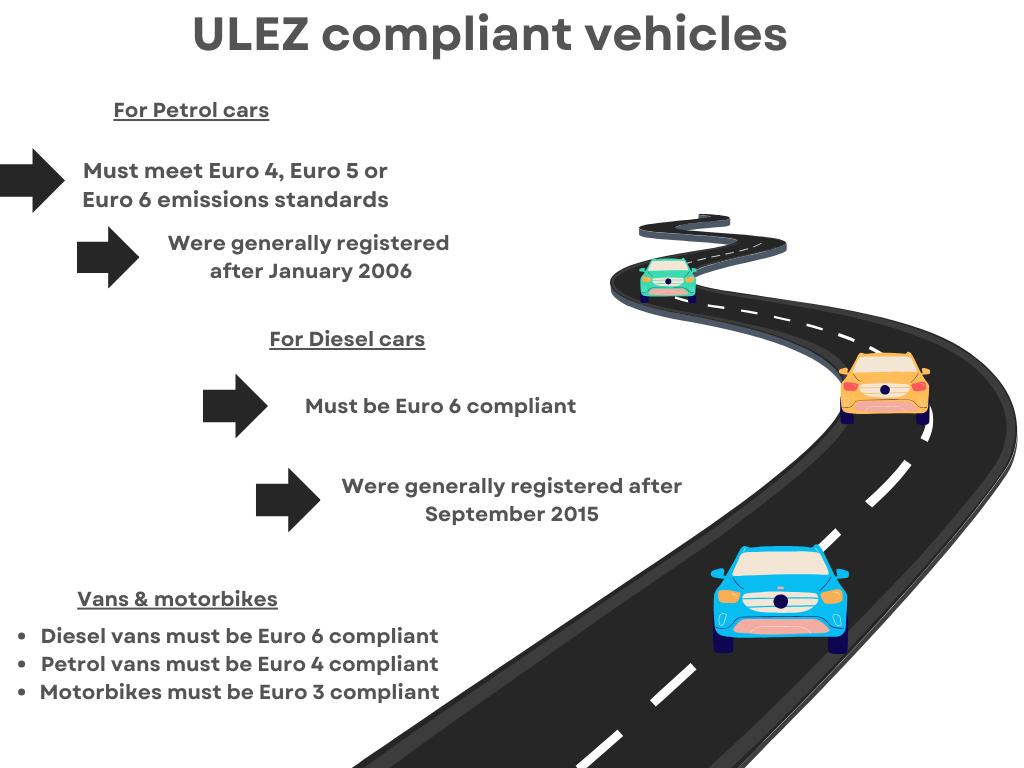The term ‘Ultra Low Emission Zones’ (ULEZ) has been dominating the headlines recently. Plans to expand London’s ULEZ have raised controversy amongst politicians and the public. But what exactly does this mean and how could it affect you? Here’s a breakdown of what you need to know.
What are Ultra Low Emission Zones (ULEZ)?
In a nutshell, it refers to a £12.50 daily charge for driving in a designated zone if a vehicle doesn’t meet certain emission standards. Initial plans meant it would only impact a portion of London, whereas now, it’s set to impact all boroughs in London with very few exceptions. ULEZ zones operate 24/7 using various cameras, meaning that the emission standards must be met at all times, including nights and weekends. Although the term ULEZ has been synonymous with London in recent news, ULEZ does exist in several other UK cities such as Birmingham, Bristol, Portsmouth, Edinburgh and more.
More and more research is being released about the deadly consequences of poor air quality, which has motivated the policies. On top of the social aspects, the reduction of emissions will also aid environmental motives and help to reduce the amount of pollution in the air and reduce overall greenhouse emissions. By implementing ULEZ, the goal is to deter the public from driving in already polluted urban areas of the UK and ultimately, change their vehicle to one that is compliant.

ULEZ vehicle categories
Only certain vehicle categories will be impacted by ULEZ regulations. Approximately 200,000 out of the 2.3 million vehicles seen driving in London on an average day are non-compliant.
Your vehicle and emission type need to meet the required Euro standard to meet ULEZ emission standards. These include:
- Euro 3 for motorcycles, moped, motorised tricycles and quadricycle
- Euro 4 (NOx) for petrol cars, vans, minibuses and other specialist vehicles
- Euro 6 (NOx and PM) for diesel cars, vans and minibuses and other specialised vehicles.
Lorries, vans and specialist heavy vehicles won’t need to pay the ULEZ charge. Instead, they will be required to pay the ULEZ charge if they don’t meet the ULEZ emission standards.
You can use the online TfL vehicle checker to see whether driving in this zone in a particular vehicle will result in you paying the charge. The ULEZ is based on emission as opposed to the age of the vehicle. However, petrol cars that meet the standards are typically first registered with the DVLA after 2005. For diesel cars, this will generally be September 2015.
Transitioning to Low-Emission Vehicles
Examples of models that are ULEZ compliant include electric and hybrid models by companies like BMW, which can be taken advantage of with BMW gap insurance for added protection as they tend to be pricier than their non-EV counterparts. Another model that is ULEZ compliant is the increasingly popular Tesla Model 3 which is fully electric, also referred to as a BEV.
Electric vehicles (EVs) are a sensible investment regardless due to upcoming legislation banning the sale of new petrol and diesel cars in 2030. So long as the infrastructure is sufficient to meet demand, operating an electric vehicle simply requires a shift in mindset. Benefits include less money being spent on fuel as well as significantly reduced emissions. Plus, they are made up of fewer parts compared to a standard petrol or diesel car, which means they should be easier to maintain, and repair as well as being less likely to break down.
Conclusion
ULEZs are implemented in cities around the world as part of broader efforts to combat air pollution, reduce greenhouse gas emissions, and promote the use of cleaner transportation options, such as electric and hybrid vehicles. They are often seen as an effective tool to encourage the adoption of low-emission vehicles and improve the quality of urban air. However, they can also be a source of debate, as some argue that they place a financial burden on vehicle owners and may disproportionately affect lower-income individuals who may have older, higher-polluting vehicles.
